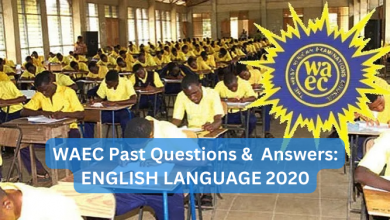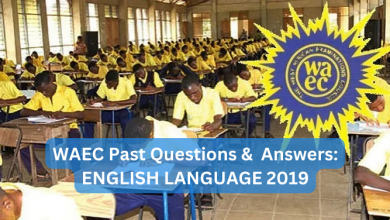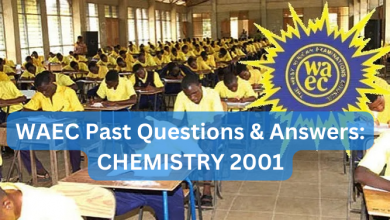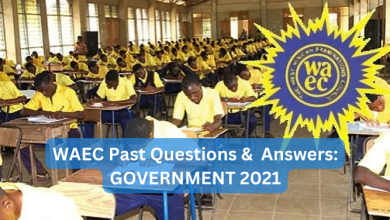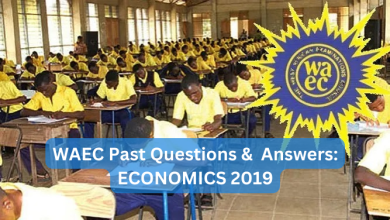WAEC Past Questions & Answer: GOVERNMENT 2020

Welcome to our WAEC past question and answer series. In this post, we will be sharing Government 2020 past questions and their answers for various subjects. Stay tuned enjoy while learning.
1. In modern democracy, a government is _________
A. a contrast between the rulers and the ruled
B. a preserve of the political party in power
C. monopoly of the ethnic group
D. alternation of power between the majority and minority tribes
2. The ability to make and enforce laws and administer justice constitute the major functions of a _________
A. nation
B. society
C. government
D. pressure group
3. Execute power in a cabinet system of government is vested in the ________
A. legislature
B. judiciary
C. civil service
D. council of ministers
4. A feature of a confederal state is that _______
A. it is a single sovereign state
B. its constitution is flexible
C. any unit can secede at will
D. its powers are distributed equally between the centre and units
5. A feature of a confederal state is that _______
A. it is a single sovereign state
B. its constitution is flexible
C. any unit can secede at will
D. its powers are distributed equally between the centre and units
6. One of the limitations to the principles of rule of law is _________
A. Immunity
B. equality
C. liberty
D. impartiality
7. Countries adopt unitary system of government because it __________
A. detests dictatorship
B. promote national integration
C. concentrates power only at the centre
D. allows the component units to secede at will
8. Which of the following is an advantage of monocephalous executive ___________
A. sharing of power
B. quick decision making
C. impartial dispensation of justice
D. enjoyment of press freedom
9. A major difference between power and authority is that, authority is ________
A. scarcely exercised
B. more dependent on coercion
C. acquired popularly
D. exercised through force
10. Political participation can take the form of __________
A. belonging to a trade union
B. being a member of a pressure group
C. canvassing for votes
D. organising festival for good harvest
11. Which of the following is a disadvantage of proportional representation?
A. encourages rigging
B. promotes strong government
C. makes for easy decision making in parliament
D. is difficult and cumbersome to operate
12. The sum total of authority in a state unrestrained by law is _______
A. monarchy
B. society
C. oligarchy
D. sovereign
13. The flexibility and rigidity of constitution refer to the __________
A. sources of constitution
B. making of constitution
C. ease of amending constitution
D. coding of constitution
14. The observance of Rule of Law in a state requires _________
A. an independent judiciary
B. an ineffective police system
C. a flexible constitution
D. existence of a two-party system
15. The principle of separating the judiciary from the other organs of government and making it free from executive and legislative influence is termed __________
A. judiciary
B. judicial review
C. separation of powers
D. fusions of powers
16. The right to respect the personality of the individual is a _________
A. civil right
B. natural right
C. social right
D. economic right
17. Which of the following constitutional provisions gives a high degree of autonomy to component parts of a unitary state?
A. Devolution
B. Delegation
C. Divestiture
D. Declaration
18. The following are redresses available at the courts for aggrieved people except _________
A. injunction
B. mandamus
C. certiorari
D. prorogation
19. Which of the following usually leads to the curtailment of the rights of citizens?
A. transitional period
B. granting of presidential pardon
C. period pf constitutional pardon
D. violent socio-political unrest
20. The national secretariat of a political party is managed by the ________
A. presidential candidate
B. funding members
C. national chairman and general secretary
D. national executive and youth organiser
21. The type of election which allows party members to elect candidates for elective offices is _________
A. general election
B. bye election
C. direct election
D. primary election
22. An opposition party which sees itself as ”government -in-waiting” is called ______
A. shadow government
B. caretaker government
C. national government
D. responsible government
23. The document which sets out the programme of a political party and guides the electorate to vote for it is the ________
A. constitution
B. electoral register
C. manifesto
D. white paper
24. An advantage of a two-party system is that it __________
A. simplifies the electoral process
B. ensures winner takes all
C. protects the electoral commission
D. protects the electorate from vote buying
25. Which of the following is a non-partisan organization with the aim of influencing government policies?
A. Political party
B. Pressure group
C. Humanitarian
D. Relief organization
26. The collective views held by majority of citizens of a country about a particular policy is _________
A. national interest
B. public opinion
C. commentary
D. bulletin
27. An institution under the executive arm of government responsible for formulating and implementing government policies is the ________
A. public service
B. public corporation
C. civil service
D. judicial service
28. The following are means of controlling public corporation except _________
A. legislative control
B. judicial control
C. ministerial control
D. chief of staff control
29. The institution established by the constitution to be responsible for recruiting personnel into the civil service is the ___________
A. personnel management office
B. office of the president
C. National labour commission
D. Public service commission
30. If a winner emerges in an election as a result of his/her votes being more than the combined votes of the opposing contestants; what types of electoral system is being practised?
A. Absolute majority
B. plurality
C. second ballot
D. alternative vote
31. Which of the following is a function of an electoral commission?
A. adjudicating election petitions
B. provision of electoral registers
C. disciplining personnel in the civil service
D. promotion of public servants
32. Which of the following is not an electoral malpractice?
A. impersonation
B. threatening
C. campaigning for a candidate
D. gerrymandering
33. Local government sources of revenue can best be improved through?
A. schools
B. the collection of import duties
C. the provision of housing units
D. cottage industries
34. Public opinion is important in that, it ________
A. helps political parties to assess their policies
B. creates delays in the execution of policies
C. may be unreliable and misleading
D. can be manipulated by political opponents
35. One of the features of pressure groups is that all members ________
A. are rich
B. think in the same way
C. have similar interests
D. oppose the government
36. Which of the following modes of operation of pressure group undermines economics, social and political stability of the state ________
A. Lobbying
B. symposia
C. strikes
D. debates
37. The police reform all the following functions except ________
A. Public execution of law breakers
B. prosecuting law breakers
C. protection of life and property
D. enforcement of law and order
38. Which of the following is a reason for the failure of the assimilation policy in French West Africa?
A. The change in name of their culture
B. The refusal of the African to be culturally colonised
C. The paternal policy of the French
D. Bribery of the opinion leaders by the French
39. The capital of the French Federation of West Africa states was located in?
A. Bamako, Mali
B. Dakar, Senegal
C. Conakry. Guinea
D. Niamey,Niger
40. Under the crown colony system of administration, major policies were implemented in the colonies by the ________
A. Chiefs and their elders
B. Secretary of states for the colonies
C. Chiefs and the British
D. Colonial governor
41. One way of improving productivity in the public service is through?
A. promotion without examination
B. higher salaries and allowances
C. increase in working hours
D. open door policy
42. Which of the following made the colonial Government a ” Virtual Dictator”?
A. Legislative council
B. Executive council
C. appointment of departmental heads
D. Reserved veto powers
43. Which of the following is a feature of the French policy of Association?
A. Elevation of the position of the chiefs
B. French citizenship to subjects
C. scholarships to needy students
D. language barrier and race
44. The African Union is most often unable to resolve conflicts because of _________
A. financial weakness
B. absence of African High Command
C. Differences in Culture
D. Language barrier and race
45. The formation of the African Union is aimed at achieving a wider goal of ________
A. cultural integration
B. continental government
C. national solidarity
D. African identity
46. A major advantage of a country’s foreign policy is that, it ________
A. encourages infringement on the territories of other states
B. promotes the country’s national interest
C. stimulates political activities in the state
D. promotes understanding between the leaders and the led
47. The West African Students Union (WASU) was formed by _______
A. Siaka Stevens
B. K. A. Gbedemah
C. E.F Small
D. OLadipo Solake
48. A military coup d’etat is followed by _________
A. enforcement of fundamental human rights
B. suspension of the constitution
C. breaking of diplomatic relations with foreign countries
D. mass importation of firearms
49. Which of the following countries is a Unitary?
A. Nigeria
B. Egypt
C. Ghana
D. Canada
50. Which of the following does not influence a country’s foreign policy?
A. Desire for foreign investments
B. International law, Conventions and Treaties
C. Religion and racial factors
D. Age of the leader
Answers To Questions
- A
- C
- A
- C
- C
- A
- B
- B
- C
- C
- C
- C
- C
- A
- C
- D
- A
- D
- D
- C
- D
- A
- C
- A
- B
- B
- C
- D
- D
- A
- B
- C
- D
- A
- C
- C
- A
- B
- B
- D
- B
- D
- B
- D
- D
- B
- D
- B
- B
- D

